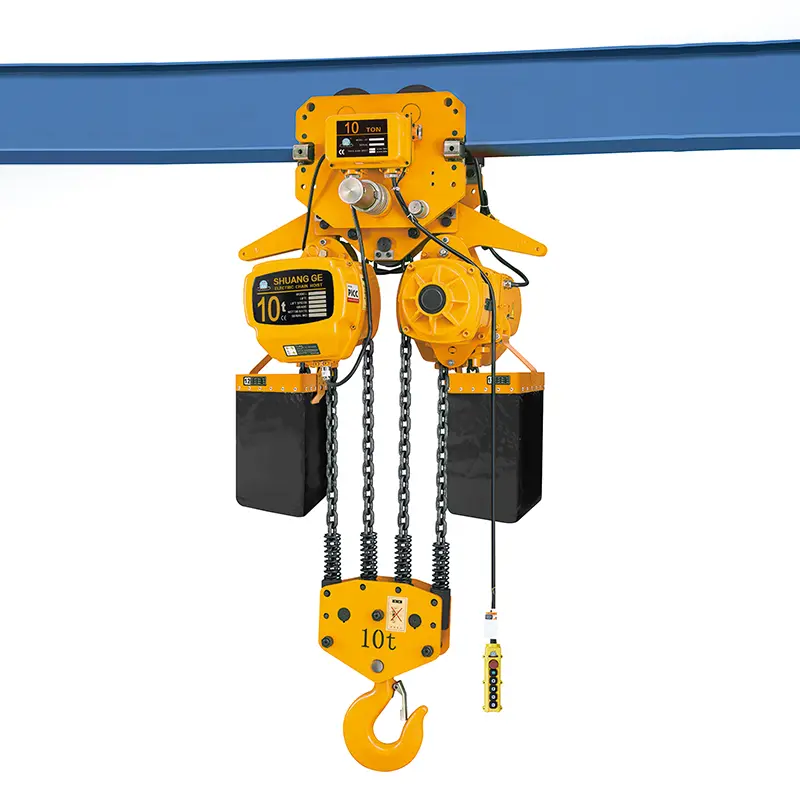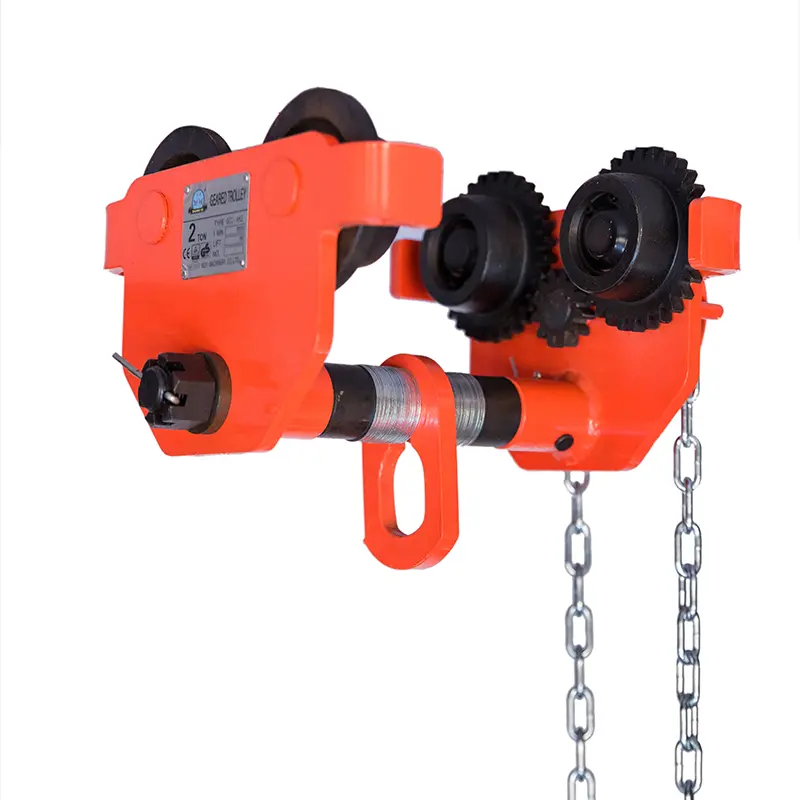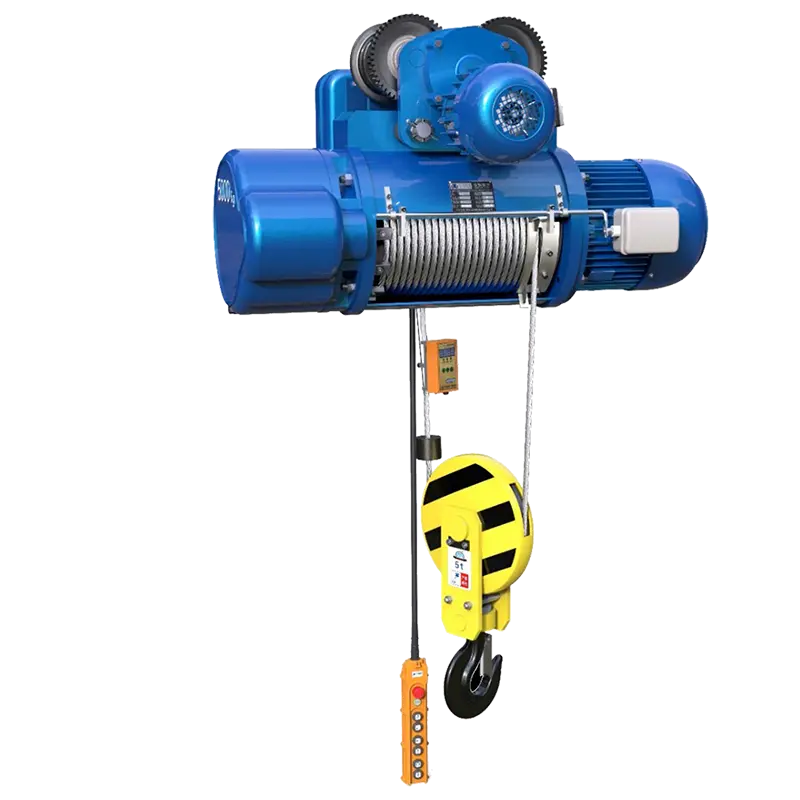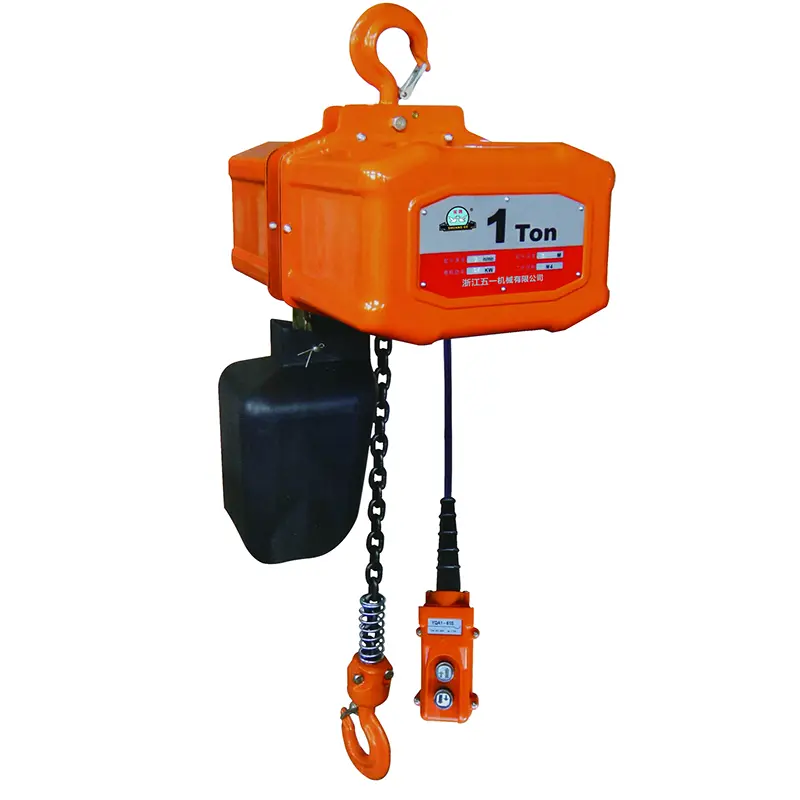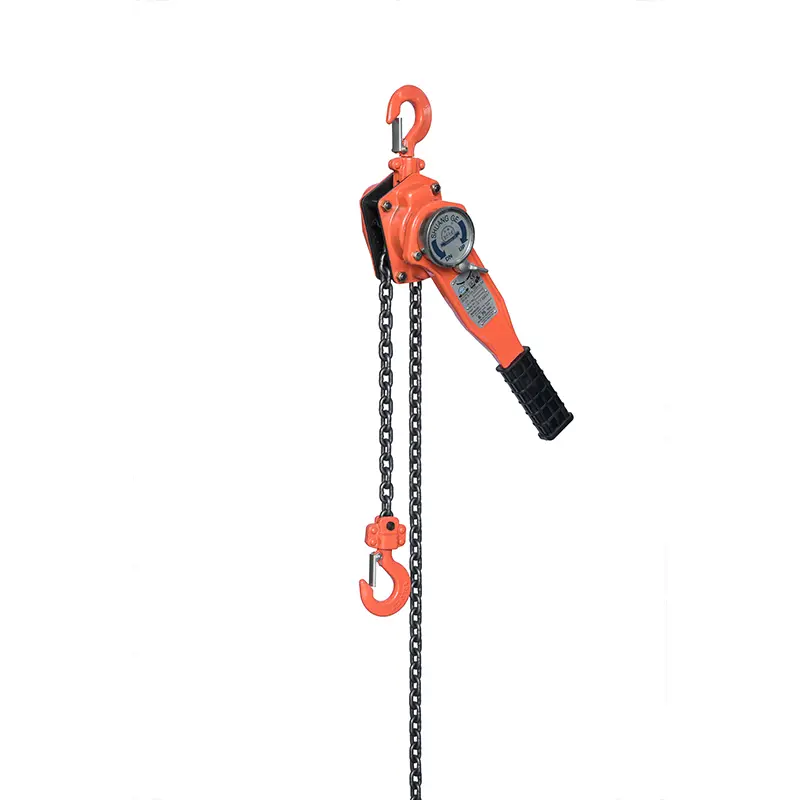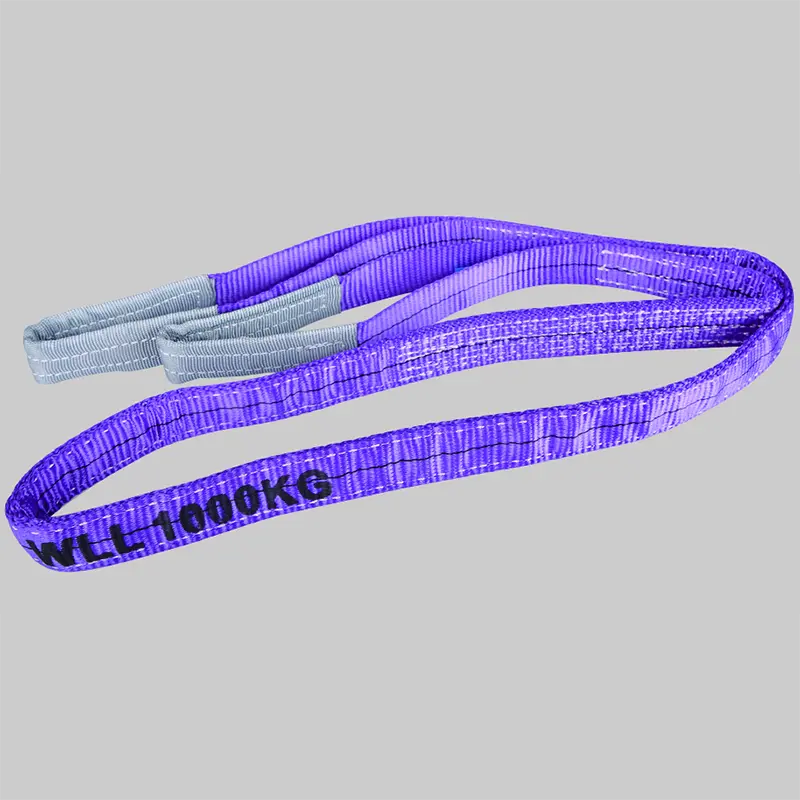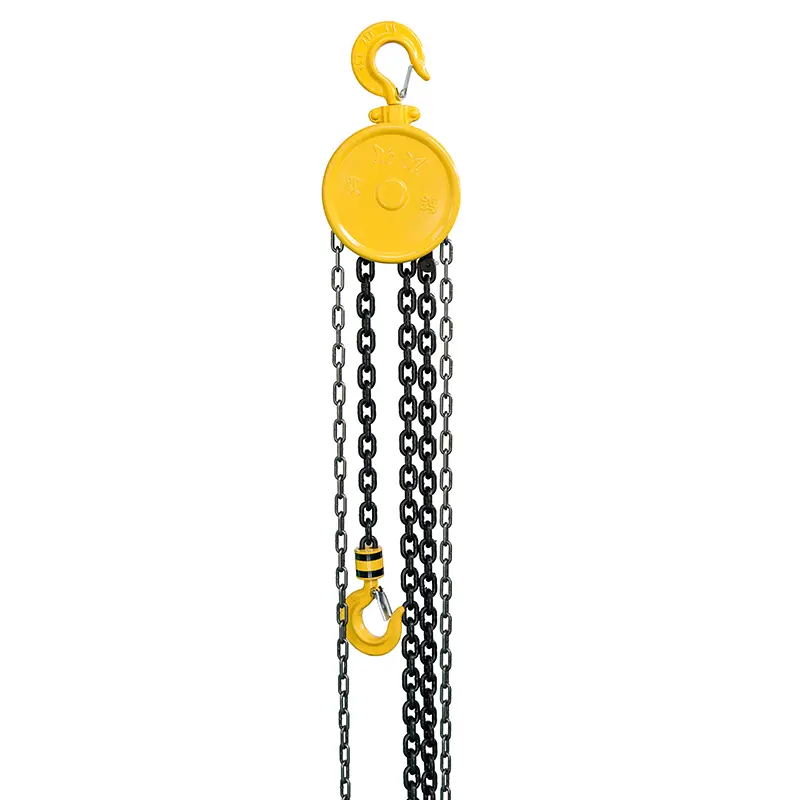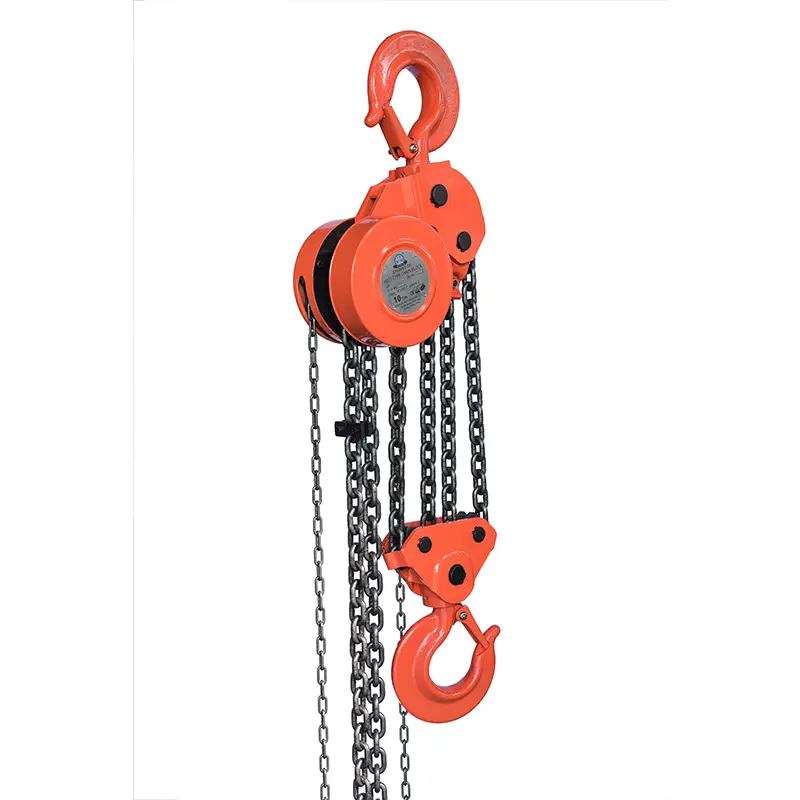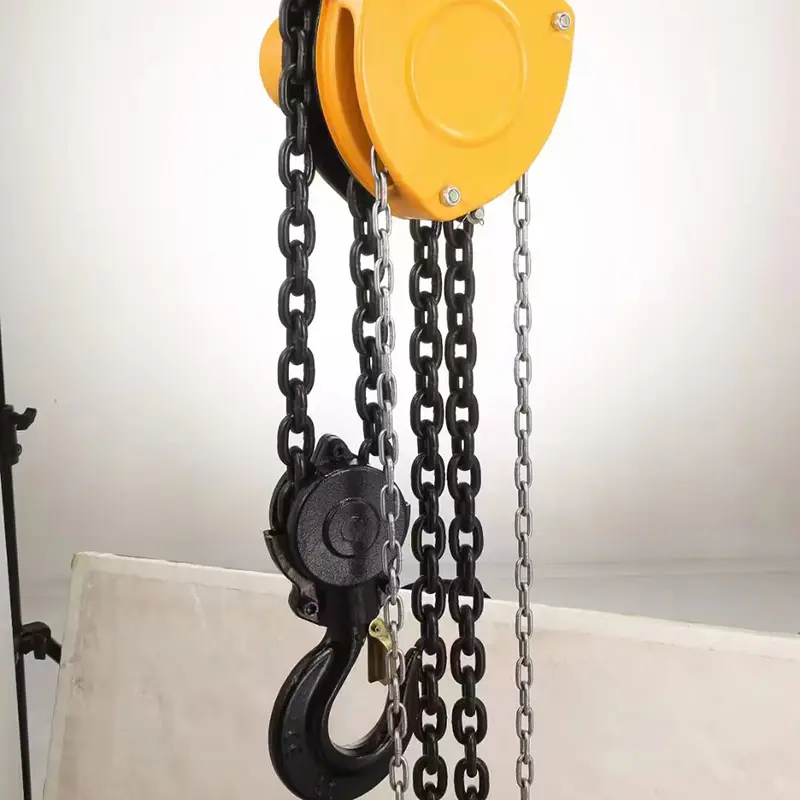Test standards for lever hoists
Test standard items for lever hoists
(1) No-load test: Pull the forward lever and reverse lever back and forth three times when there is no load, and observe the working condition of the mechanism. There should be no jamming.
(2) Rated load test: Tested on a special test bench, the hand pull force and the reciprocating wire rope stroke of the handle should meet the standard requirements.

(3) Dynamic load test: Test on a special test bench, load at 1.1 times the rated load, rise and fall once, and the wire rope movement distance should not be less than 200mm each time. The whole machine should work smoothly and reliably.
(4) Static load test: On a special test bench, gradually load to 1.5 times the rated load and stay for 10 minutes. The clamps and clamping plates shall not cause permanent deformation that affects the performance.
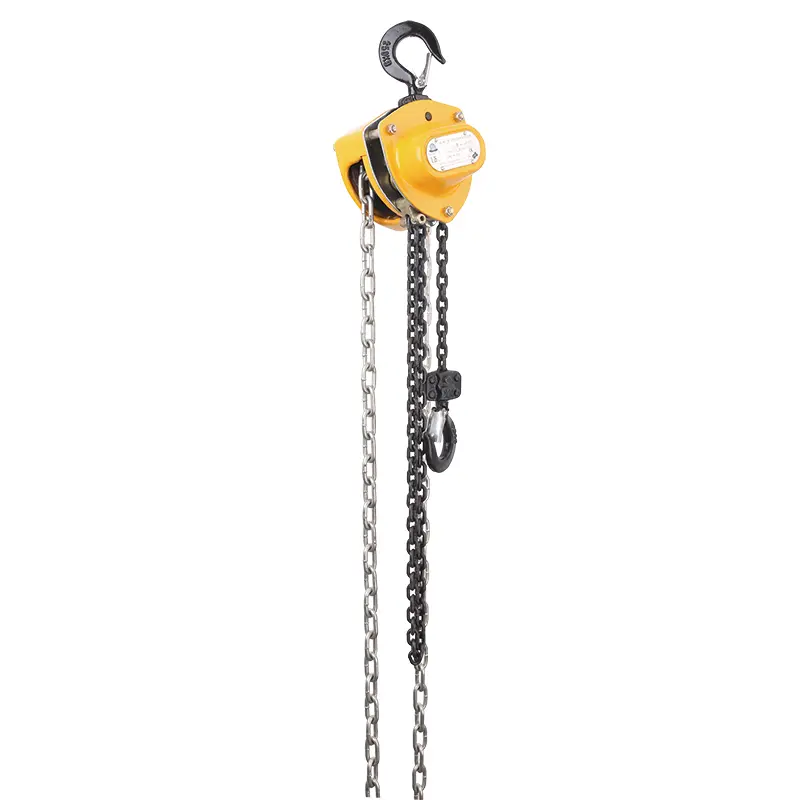
(5)Hook test:
① On the material testing machine, gradually load up to 2 times the rated load through the center of the hook cavity, and then remove the load after staying for 1 minute. Check the deformation of the hook mouth, which shall not exceed 0.25%;
② On the material testing machine, gradually load up to 4 times the rated load through the center of the hook cavity, and the hook should be able to support reliably for 1 minute.
(6) Reliability test: Under rated load, continuously pull the forward lever and reverse lever back and forth so that the cumulative back-and-forth stroke of the wire rope is not less than 120m (can be done in four times, but each time, but the cumulative stroke of the wire rope each time 30m, and the interval between each time shall not exceed 1 hour. Replacement of the wire rope is not allowed during the test). There must be no abnormality in any part of the lever hoist.
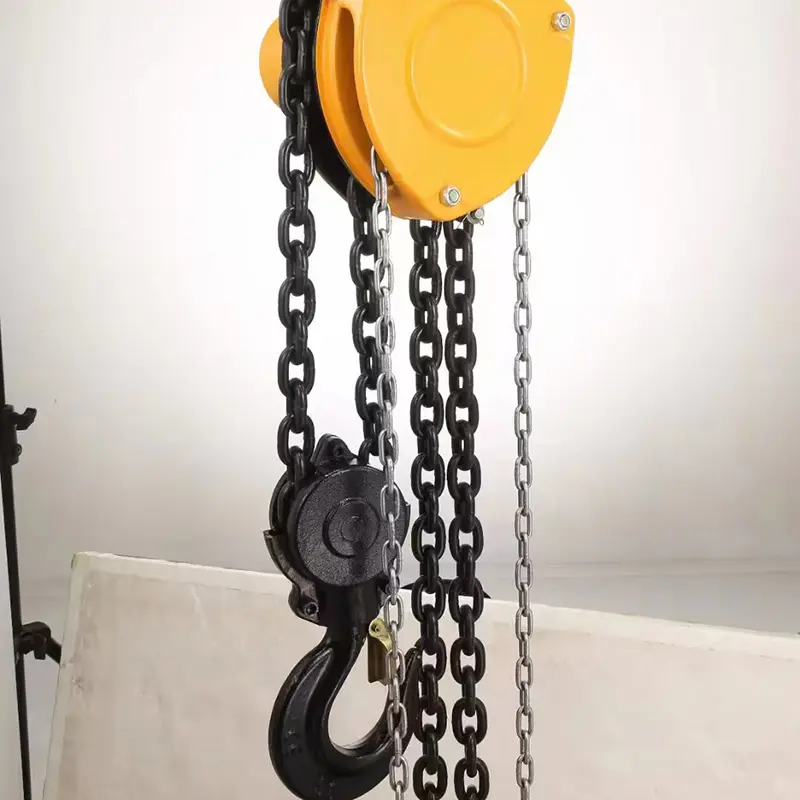
(7) Appearance quality inspection: The surface of the hook should be smooth and clean, and there should be no burrs, cracks, folds, or local defects that reduce strength; no repair welding is allowed on the hook. The surface of the clamping plate should be straight and free of burrs. The ends of the wire rope should be rounded and not loose. No knots, bumps or twists are allowed in the entire rope. The riveting of parts should be firm, and the riveted heads should not have defects such as flash, cracks, or scratches. The painted part should be even and bright in color. There should be no stains, bubbles, wrinkles, peeling and roughness.


